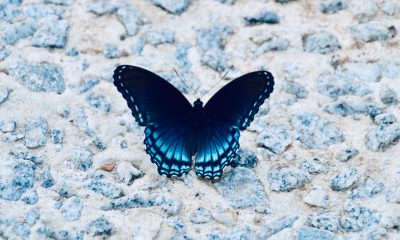By Alice Clifford via SWNS
People today have a worse sense of smell than our ancient ancestors, according to a new study.
Ancient hominins Denisovans were found to have the greatest sensitivity to smell, leaving Neanderthals and today’s humans in the dust.
Denisovans are distant relatives of Neanderthals and are very early humans. They are known mostly from modern-day Siberia but have left very little remains, making it hard to find out much about them.
Most of what is known has come from evidence from their DNA.
Remains found of these species in the Denisova Cave in Siberia, Russia were dated between 76,200 and 51,600 years ago.
Neanderthals have left much more evidence of their existence. They lived in Europe and Asia around 400,00 years ago, going extinct around 40,000 years ago.
While similar in their make-up, there is one big difference between these cousins – their sense of smell.
Denisovans were generally more sensitive to odors than humans and much more sensitive than Neanderthals.
A good sense of smell would have been crucial during their existence.
Denisovans were most responsive to sweet and spicy smells like honey, vanilla, cloves, and herbs, which would have helped them find high-calorie food.
However, Neanderthals struggled with this sense. Neanderthals from the Chagyrskaya Cave in Russia couldn’t detect the sex steroid androstadienone, which smells something like sweat and urine.
This smell would have been useful, given they were often trapped in close quarters in caves.
To recreate the noses of our extinct genetic relatives and compare them to those of present-day people, the research team used publicly available genome sequences from multiple Neanderthals, one Denisovan and one ancient human.
They used data from the 1,000 Genomes project to represent modern humans.
They then compared 30 olfactory receptor genes from each group. Olfactory receptors are also known as smell receptors.
via GIPHY
The team found that 11 of the receptors had some novel mutations present only in extinct lineages.
They created laboratory versions of those 11 smell receptors and exposed them to hundreds of odors at different concentrations.
When the receptors detected a smell, they lit up.
The speed and brightness of the luminescence told the scientists whether, how soon and to what degree each “nose” could smell the odors.
While the receptors could detect the same things as modern humans, they differed in sensitivity to many of the smells.
Study leader Dr. Claire de March, a biochemist from the University of Paris-Saclay, said: “We literally reproduced an event that hadn’t happened since the extinction of Denisova and Neanderthal 30,000 years ago: an extinct odorant receptor responding to an odor in cells on a lab bench.
“This took us closer to understanding how Neanderthal and Denisova perceived and interacted with their olfactory environment.”
Co-author Matthew Cobb, from the University of Manchester, added: “This is the most exciting research I have ever been involved in.
“It shows how we can use genetics to peer back into the sensory world of our long-lost relatives, giving us insight into how they will have perceived their environment and, perhaps, how they were able to survive.”
In many species, smell receptors have been linked to their ecological and dietary needs.
Co-author Hiroaki Matsunami, a professor of molecular genetics and microbiology at Duke University, North Carolina, added: "Each species must evolve olfactory receptors to maximize their fitness for finding food.
"In humans, it's more complicated because we eat a lot of things. We're not really specialized."
Prof. Kara Hoover, of the University of Alaska Fairbanks, said: "This research has allowed us to draw some larger conclusions about the sense of smell in our closest genetic relatives and understand the role that smell played in adapting to new environments and foods during our migrations out of Africa.”
She added: “Such a strongly overlapping olfactory repertoire suggests that our generalist approach to smelling has enabled us to find new foods when migrating to new places — not just us but our cousins who left Africa much earlier than us.”

 Parenting2 days ago
Parenting2 days ago
 Broadcast4 days ago
Broadcast4 days ago
 Broadcast3 days ago
Broadcast3 days ago
 Funny1 week ago
Funny1 week ago
 Money4 days ago
Money4 days ago
 Parenting1 week ago
Parenting1 week ago
 Pets5 days ago
Pets5 days ago
 Environment3 days ago
Environment3 days ago






















